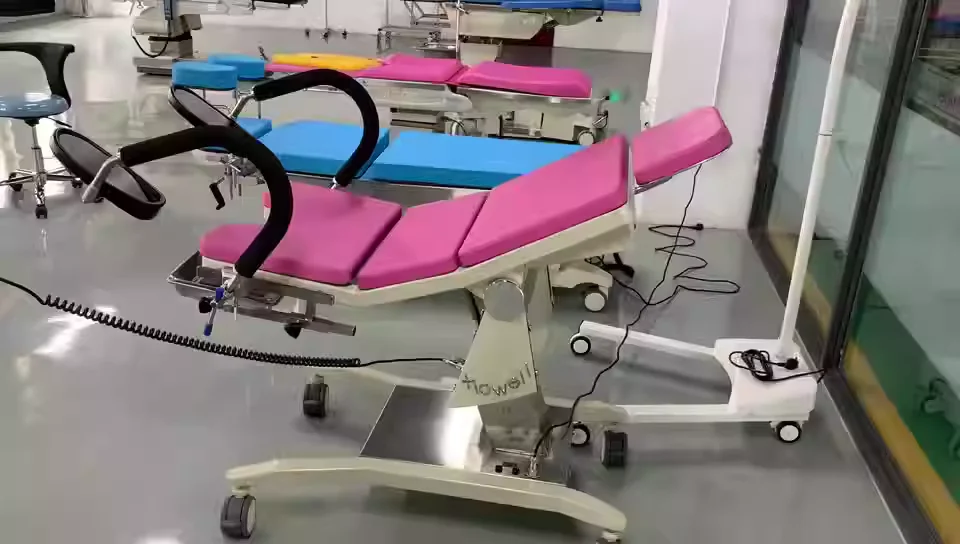GyneCube, more precisely known in many sources as the Gyn & Cube pessary, is becoming better known in gynecological and urogynecological care as a useful, non-surgical option to help manage pelvic organ prolapse, urinary incontinence, and related conditions. In this article, we will examine what GyneCube / Gyn & Cube is, how it works, benefits, usage instructions, safety considerations, and how it fits into the broader landscape of women’s pelvic health.
What Is GyneCube / Gyn & Cube? Definition & Purpose
The term GyneCube is sometimes used interchangeably or as a variant of Gyn & Cube, which is a brand name of a silicone pessary device used in gynecology. The Gyn & Cube pessary is typically a silicone, latex-free, pyramidal / cubic shape device that offers support to pelvic organs.
According to the manufacturer Laboratoires Gyneas, Gyn & Cube targets incontinence during exertion (such as sports, jogging, long walking), moderate prolapse (cystocele, rectocele, mild uterine descent), and post-partum or transient urinary leakage.
Its purpose is to be a non-surgical, removable, vaginal support device that can be used under medical supervision, allowing many women to manage symptoms without immediately resorting to surgery.
So, in short: GyneCube / Gyn & Cube is a medical vaginal device intended to support pelvic organs, reduce incontinence, and relieve prolapse symptoms in a minimally invasive way.
How GyneCube / Gyn & Cube Works: Mechanism & Design
Understanding how this device works requires looking at its material, shape, and method of insertion/removal.
Material & Structure
- The Gyn & Cube pessary is made of medical-grade silicone, which is hypoallergenic, non-absorbent, and resistant to odor or fluid uptake
- It is autoclavable, meaning it can be sterilized under heat for re-use (under medical guidance).
- A Kevlar-reinforced string or cord is often integrated (protected or encased by silicone) to assist removal.
- The shape is pyramidal / cubic with drainage holes, allowing fluids (mucus, vaginal secretions) to pass and reducing suction that would otherwise hold it too tightly.
Mechanism of Action
- The device, when placed in the vaginal canal, exerts gentle mechanical support against the walls of the vagina and adjacent pelvic tissues. This helps prop up prolapsing organs (such as bladder, uterus, or rectum) and relieve pressure.
- The design also helps reduce downward forces or movement of internal organs during physical exertion by providing an internal supporting structure.
- Drainage holes mitigate fluid buildup and suction, making the device less uncomfortable or adherent to surrounding tissues.
- Because it is removable, the user (or clinician) can insert it in the morning and remove it in the evening (or as advised).
Thus, GyneCube / Gyn & Cube acts as an internal support scaffold, substituting for, or delaying the need for, surgical correction in appropriate cases.
Clinical Uses & Indications
GyneCube / Gyn & Cube finds its role in several gynecological and urogynecological settings. Some of the key uses include:
Pelvic Organ Prolapse (POP)
For mild to moderate prolapse (e.g. cystocele, rectocele, or early uterine descent), the pessary can help hold the displaced organs in a more anatomically favorable position.
It is especially useful when the patient is not a good surgical candidate, wants to delay surgery, or wants a conservative management approach.
Stress Urinary Incontinence (SUI) / Leakage during Exertion
- Gyn & Cube may help reduce urinary leakage during physical exertion such as running, jumping, or long walks by supporting the urethra and adjacent tissues.
- It is sometimes prescribed for women who experience incontinence after childbirth or during certain activities.
Postpartum & Transient Conditions
- In the postpartum period, as the pelvic floor recovers, temporary use of the device may help manage transient prolapse or urinary symptoms.
- For women who do not yet wish for permanent surgery, it offers an interim, less invasive option.
Self-Management & Long-Term Use
- Some research (e.g. in cube pessaries more broadly) suggests that daily self-management (insertion and removal by the patient) can be safe and effective over extended periods.
- In that study, cube pessaries (a similar family of devices) improved POP-related symptoms and quality of life without major complications over long follow-up.
Thus, when properly selected and monitored, GyneCube / Gyn & Cube may serve as a practical, patient-managed solution in gynecological care.
How to Use GyneCube / Gyn & Cube: Insertion, Removal & Care
It is crucial that usage be guided by a clinician initially, but here is a general overview of how insertion, removal, and maintenance are typically handled.
Insertion (Placement)
- The patient may adopt a position such as standing with one leg elevated (on a chair), or lying on her back with knees bent.
- A water-based lubricant may be used to ease insertion.
- The device is compressed between thumb and index finger and inserted into the vaginal canal, following the natural angle of the vagina. Then gently advanced so the body of the pessary seats itself.
- Care must be taken to leave the first half of the pessary uncovered initially, and then slide it further back carefully.
Removal
- Do not pull on the cord alone to remove, as suction and adhesion may resist simple pulling.
- First, break any suction: insert a finger between the device and vaginal wall to allow air entry.
- Then compress the device between thumb and index fingers, and ease it out along the natural vaginal orientation, using the cord as a guide if present.
- A lubricant may assist removal.
Cleaning & Maintenance
- After removal, clean the device thoroughly using gentle, non-irritating soap and warm water, or as per clinical instructions.
- Being made of silicone, it can often be sterilized or autoclaved if safe per manufacturer guidelines.
- Store it in a clean container when not in use.
- Inspect regularly for wear, degradation, or signs of damage.
Wear Schedule & Replacement
- Many patients wear the pessary during the day, removing it at night (unless otherwise advised).
- The standard size (28–38 mm) covers many users (reported ~80% suitability).
- However, small and large sizes also exist (22–30 mm, 32–44 mm) to accommodate anatomical variance.
Because every individual’s anatomy is different, the right size and pattern of use must be determined under medical guidance.
Benefits & Advantages
Why might a clinician or patient choose GyneCube / Gyn & Cube? The benefits can be both symptomatic and quality-of-life improvements.
Non-Surgical Option
It offers a less invasive alternative for women who are not ready for surgery, have contraindications, or want to delay operative intervention.
Symptom Relief
Many patients report reduced pelvic pressure, less sensation of bulging, and relief from urinary leakage when exercising.
Patient Autonomy & Comfort
- With training, many women can self-manage insertion/removal, enhancing independence.
- The silicone material and drainage holes contribute to comfort, hygiene, and reduced irritation.
Cost Effective
Compared to surgery or ongoing medications, a pessary may offer cost savings, especially if long-term use is tolerated.
Quality of Life Improvement
Use of a pessary can improve daily function, mobility, and sexual activity (when used appropriately) by reducing interference from prolapse or incontinence.
Evidence of Long-Term Safety
In studies of cube pessaries (a similar design), long-term self-management was found to be safe and effective, improving quality of life for women with POP.
When properly managed, the device may form part of a sustainable, patient-friendly management plan.
Risks, Limitations & Contraindications
No medical device is without downsides, and GyneCube / Gyn & Cube has limitations and risks to be aware of.
Potential Discomfort & Irritation
- Some women may experience vaginal irritation, pressure, or discomfort, particularly if sizing is incorrect or for prolonged use.
- In rare cases, erosions or ulcerations of vaginal tissue may occur if the device is left without removal for extended periods.
Infection Risk
- Hygiene is crucial. Accumulated secretions or improper cleaning may increase risk of bacterial or fungal infections.
- Regular monitoring by clinicians is recommended to prevent complications.
Fit & Anatomical Suitability
- Not every anatomical variant is suitable for a cube/pyramidal pessary design. Some women may have narrow vaginal canals, significant distortion, or mass lesions that preclude safe use.
- In such cases, other pessary shapes (ring, donut, Gellhorn) may be preferable.
Contraindications
- Active pelvic infection, vaginal ulceration or lesions, severe atrophy without management, or undiagnosed vaginal bleeding may preclude insertion until resolved.
- Women with severe prolapse requiring surgical repair may not benefit sufficiently from a pessary alone.
Need for Regular Follow-Up
Clinical follow-up is necessary to ensure the device is well-fitting, no tissue damage, and to reassess continued suitability.
Limitations in Correction
A pessary is supportive, not curative—it does not repair tissue damage or reverse prolapse. Over time, prolapse may worsen, requiring surgical intervention.
Thus, GyneCube / Gyn & Cube should be viewed as a management tool, not a permanent cure in many cases.
Clinical Evidence & Studies
While specific published studies on GyneCube / Gyn & Cube are limited in the public domain, broader evidence on cube pessaries gives insight.
- A 2022 study in PMC evaluated self-management of cube pessaries (women inserting/removing daily) and found that this approach was safe, effective, and improved symptoms and quality of life over the long term.
- This suggests that, under supervision, patients may take an active role in managing their prolapse symptoms using pessary devices of this form.
It’s important to note that while these studies provide supportive context, direct, long-term clinical trials specific to Gyn & Cube may be limited or published in specialized literature.
Clinicians typically support pessary use based on individual patient evaluation rather than brand-specific evidence.
How GyneCube / Gyn & Cube Fits in Modern Women’s Health
GyneCube / Gyn & Cube is part of a broader movement toward minimally invasive, patient-empowering gynecological care. Here is how it aligns and contributes:
Role in Pelvic Floor Medicine
- In pelvic floor specialty care, pessaries offer a way to bridge conservative and surgical therapy, giving women an alternative before or after surgery.
- It enables dynamic patient choice and allows for symptom control while lifestyle, surgical timing, or comorbidities are assessed.
Patient-Centered & Home-Based Care
- With devices like Gyn & Cube, more care can shift into patient-controlled or home settings, reducing clinic visits and empowering women.
- Women with access to training and supervision can handle day-to-day management, increasing autonomy.
Integration with Pelvic Rehabilitation
Pessary use is often combined with pelvic floor physical therapy to improve muscular support, potentially reducing reliance on the device over time.
Advances in Femtech & Innovation
- The growth of femtech—technologies tailored to women’s health—supports innovation in pessaries, monitoring devices, and patient interfaces.
- Although Gyn & Cube is a mechanical tool, future versions might integrate smart sensors, outcome tracking, or assisted adjustment features.
Global & Resource-Limited Relevance
- In low-resource settings, pessaries like the Gyn & Cube can offer non-surgical symptom relief where surgical options are limited.
- With proper training and follow-up, these devices can help large numbers of women access symptomatic relief.
Overall, devices like GyneCube / Gyn & Cube help expand safe, conservative, and personalized options in women’s pelvic health care.
Conclusion
GyneCube / Gyn & Cube represents a meaningful option in the management of pelvic organ prolapse and stress urinary incontinence, particularly for women seeking non-surgical solutions. Made of medical-grade silicone, fitted in various sizes, featuring a pyramidal / cube design and drainage holes, it serves as an internal support device that women may insert, remove, and maintain under clinical guidance.
The key strengths lie in comfort, autonomy, reversibility, and cost-effectiveness. When appropriately selected and monitored, it can relieve symptoms, preserve function, and delay or avoid surgical intervention. However, its success depends critically on correct sizing, hygiene, follow-up, and patient fit. Risks like irritation, infection, or tissue damage mandate prudent use.
Used in conjunction with pelvic floor therapy and under the supervision of gynecological specialists, the Gyn & Cube / GyneCube device fits into a modern, patient-centered model of care. As women’s health advances and femtech proliferates, such tools may evolve further—offering smart adaptations, better materials, and enhanced patient usability.





